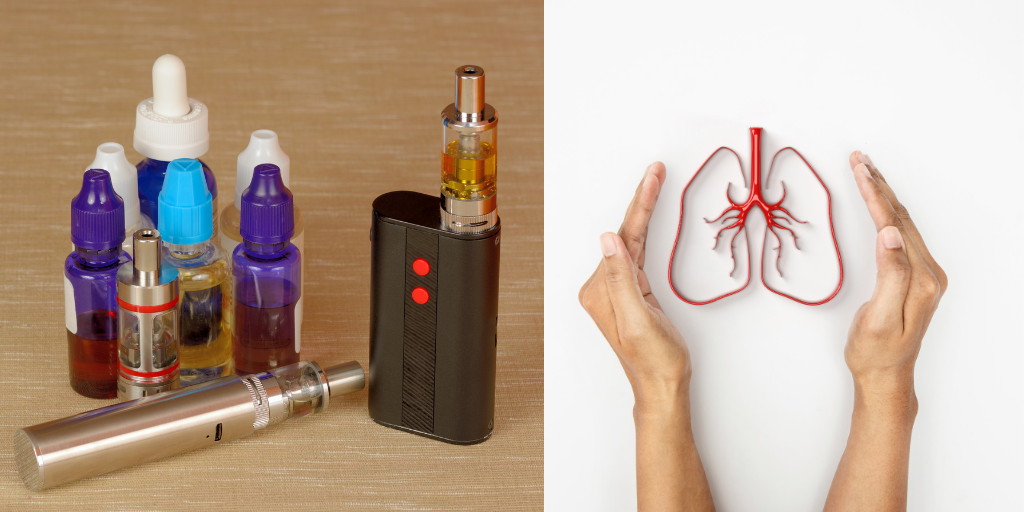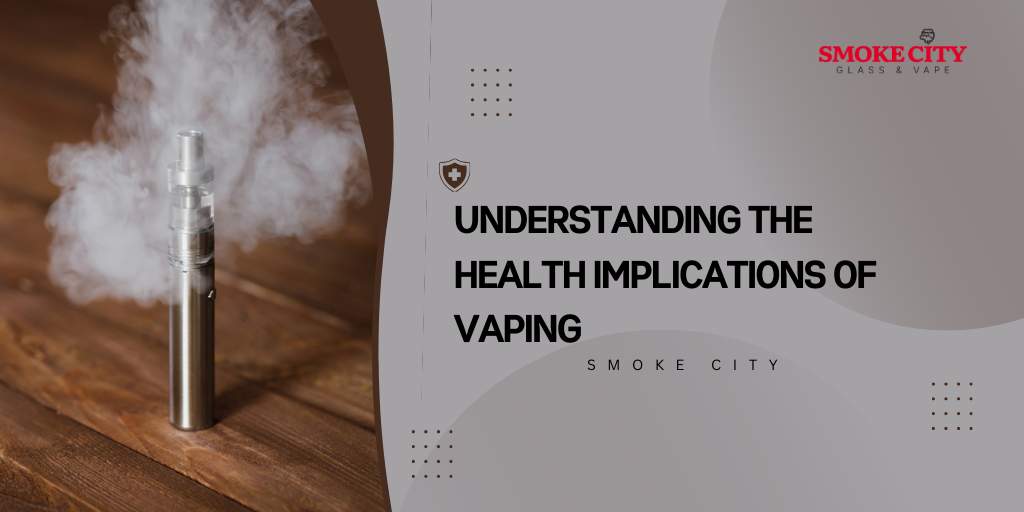Curious if vaping is truly safer than smoking? Discover the real impact of vaping on your lungs, the hidden risks behind e-cigarettes, and how it stacks up against traditional smoking.
Get the facts you need to make informed choices about your health in this eye-opening exploration of vaping.
Vaping has gained massive popularity over the past decade, marketed as a healthier alternative to smoking traditional cigarettes.
While vaping has undoubtedly helped many smokers transition away from tobacco, the question remains: Is vaping genuinely safer, or does it carry its own set of risks?
In this comprehensive article, we’ll dive deep into the health implications of vaping, focusing on critical areas like its effects on lung health, and the often-debated question: How many cigarettes is a vape equivalent to?
Is Vaping a Safer Alternative to Smoking?
One of the most common arguments in favor of vaping is its potential as a safer alternative to smoking. Traditional cigarettes contain over 7,000 chemicals, many of which are toxic or carcinogenic. In contrast, vaping products generally consist of fewer chemicals, including nicotine, propylene glycol, vegetable glycerin, and various flavorings.
Why Vaping is Considered “Safer”
Vaping products do not contain many of the harmful chemicals found in cigarettes, such as tar and carbon monoxide.
According to a report by Public Health England, vaping is estimated to be 95% less harmful than smoking cigarettes. This statistic is often cited by vape proponents, highlighting the absence of toxic substances associated with combustion in traditional cigarettes.
However, it’s essential to recognize that “safer” does not necessarily mean “safe.” Vaping products still contain nicotine, a highly addictive substance. Additionally, there is growing concern over the long-term effects of the other chemicals and flavorings used in vaping products.
The lack of conclusive research due to the relatively short history of vaping has left a gray area regarding its safety.
The Risks of Nicotine Addiction
While vaping may reduce the exposure to harmful chemicals, the nicotine present in most vape products remains a concern.
Nicotine is addictive and can lead to increased blood pressure, heart rate, and a heightened risk of developing heart disease.
For young users, nicotine exposure can also interfere with brain development, making early vaping use especially risky.
The Case for Harm Reduction
For lifelong smokers, transitioning to vaping can be an effective harm-reduction strategy. Studies have shown that smokers who switch to vaping experience fewer health issues than those who continue to smoke.
Therefore, many health experts view vaping as a preferable option for adult smokers who are unable to quit nicotine altogether.
The Impact of Vaping on Lung Health

Lung health is one of the most significant areas of concern when discussing vaping. While traditional cigarettes are notorious for causing chronic obstructive pulmonary disease (COPD), lung cancer, and a host of other lung-related issues, vaping also poses some risks to respiratory health.
What Happens to a Vaper’s Lungs?
Vaping introduces foreign substances into the lungs, and this can lead to inflammation and other lung issues over time.
Several studies have found that vaping can cause irritation of the airways, leading to symptoms like coughing, wheezing, and shortness of breath.
There have also been cases of a severe lung condition known as EVALI (E-cigarette or Vaping Associated Lung Injury).
While EVALI has primarily been linked to vitamin E acetate in illicit THC vaping products, the scare raised awareness about the potential dangers of unregulated vaping products.
Does Vaping Cause Long-Term Lung Damage?
One major issue with vaping research is the lack of long-term studies. Since vaping is relatively new, the long-term effects on lung health are still largely unknown.
However, early studies suggest that long-term vaping could cause chronic bronchitis-like symptoms in regular users. There is also concern over the inhalation of heavy metals, such as nickel and lead, which can leach into vapor from the device’s heating coil.
A 2019 study published in the American Journal of Preventive Medicine found that e-cigarette users are 30% more likely to develop chronic lung conditions compared to non-smokers.
This finding challenges the notion that vaping is harmless and suggests the need for more robust research into the long-term effects of vaping on lung health.
How Many Cigarettes is a Vape Equivalent To?
One of the most frequent questions asked by smokers transitioning to vaping is, “How many cigarettes is a vape equivalent to?” Unfortunately, this is not a straightforward question due to the vast differences in nicotine concentration and vaping habits.
The Variable Nicotine Content
Vaping allows for customization in nicotine levels, often measured in milligrams per milliliter (mg/mL). A typical vape pod can contain anywhere from 3 mg/mL to 50 mg/mL of nicotine, which means there is significant variability in how much nicotine a user consumes in a vaping session.
For context, a single cigarette contains approximately 12 mg of nicotine, but only a fraction of that is absorbed into the bloodstream—around 1-2 mg. This means that if you vape a 6 mg/mL e-liquid, inhaling around 1 ml of e-liquid could roughly be equivalent to smoking 3-4 cigarettes, depending on the efficiency of the device and the depth of inhalation.
Puff Counts and Nicotine Intake
Another factor that complicates the comparison is puff counts. A heavy vaper might take more puffs from their device than a smoker would from a cigarette. Some studies estimate that 14-15 puffs from a vape device might equate to a single cigarette. However, this estimate can vary widely based on the device and e-liquid used.
Understanding the Differences
The delivery method of nicotine in vaping is different from smoking. Combustion in cigarettes releases nicotine quickly into the bloodstream, leading to a rapid peak in nicotine levels. Vaping, on the other hand, offers a more gradual release of nicotine, which can influence how users perceive the strength of their vape.
The Bottom Line on Vaping and Health
When it comes to vaping and health, there is no one-size-fits-all answer. While vaping is generally considered safer than smoking traditional cigarettes, it is not without its risks. For adult smokers looking to quit, vaping can serve as a harm-reduction tool, but it’s crucial to remain informed about the potential health implications.
Vaping: A Mixed Bag of Benefits and Risks
- Benefits: For smokers, vaping can reduce exposure to harmful chemicals and lower the risk of developing severe lung diseases like cancer and COPD. Additionally, vaping allows for better control over nicotine intake, potentially making it easier for users to gradually reduce their dependence on nicotine.
- Risks: Nicotine addiction remains a significant concern, especially for younger users. Additionally, while vaping may not carry the same carcinogenic risks as smoking, the long-term effects on lung health and cardiovascular health are still unknown. Cases of EVALI and reports of heavy metal inhalation further highlight the importance of choosing regulated and high-quality products.
Conclusion
Understanding the health implications of vaping is crucial, especially as more people turn to e-cigarettes as an alternative to smoking.
While vaping offers a less harmful alternative for adult smokers, it’s essential to remain vigilant about potential risks, particularly those related to lung health and nicotine addiction.
As research into vaping continues, users should stay informed and prioritize their health by choosing regulated products and considering gradual nicotine reduction strategies.
In the end, the best path to health is to aim for complete cessation of nicotine use. However, for those struggling with quitting traditional cigarettes, vaping may provide a stepping stone toward a healthier, smoke-free life.
Ready to Make an Informed Choice About Vaping?
At Smoke City, we believe in empowering our community with the knowledge to make healthier decisions.
Whether you’re new to vaping or a seasoned user, understanding the impact of e-cigarettes is crucial. Explore our wide range of high-quality, regulated vaping products designed with your safety in mind.
Need advice or more information? Our team of experts is here to help you find the right path to a healthier lifestyle. Visit Smoke City today and take the first step towards making smarter, safer choices for your well-being. Your health matters—let’s make it a priority together.

